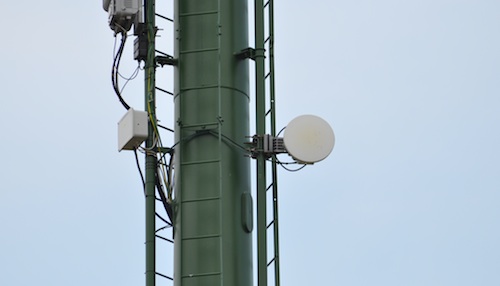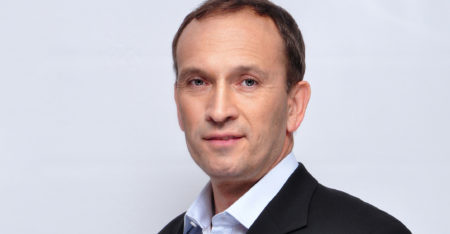Residents of Craigavon in Fourways, north of Johannesburg, have vowed to fight wireless broadband provider iBurst to the bitter end over a base station they claim is harming their health.
Tracey-Lee Dorny, who is spearheading an initiative to have the iBurst tower removed, says the residents will not back down, despite claims this week by iBurst that it has proved that the tower is not responsible for the health problems they have experienced.
TechCentral visited the base station on Friday with Dorny (pictured), who has moved out of her house adjacent to the tower because she feared for the health of her 10-year-old son.
The Dorny family is now renting a house elsewhere in Fourways.
Dorny says the residents do not want a court battle and will first exhaust all avenues available to them at the Gauteng department of agriculture, conservation & rural development. This is the government department responsible for approving new base stations and ensuring that the impact on the environment in minimised.
She says she wants the provincial government to order iBurst to remove the tower. She claims the telecommunications company erected the base station without following the proper procedures — a charge that iBurst has denied.
iBurst now says it has proof that none of the health-related problems experienced by the community was related to electromagnetic radiation from the base station.
The company’s CEO, Jannie van Zyl, earlier this week revealed to journalists that he had ordered that the Craigavon tower be switched off in early October, not long after the first health complaints had come in, and that it had remained switched off until mid-December.
He says the residents continued to claim the tower was affecting them, even though it was switched off.
Dorny is furious at Van Zyl’s move. She says the fact that the tower was switched off for so long suggests that it is not even needed. She says Van Zyl has effectively admitted to using people “against their will as human experiments, which is against the constitution” and has perjured himself by issuing conflicting statements.
She also says iBurst did not disconnect all components of the base station. She says microwave backhaul links, which connect the tower to other parts of iBurst’s network, were never switched off.
Van Zyl denies this, saying the access and backhaul (microwave) components of the tower were deactivated, too.
One of the tower’s microwave dishes, which provide point-to-point connectivity, is aimed over Dorny’s house, though not directly at it (see picture below). Dorny is concerned the microwaves have harmed her and her family.

But Van Zyl says the microwave link connects directly to another base station, and says no microwave “leakage” would have affected the Dorny home. He says he has offered to pay for independent consultants to measure radiation around the tower, but says iBurst has not received an invoice from anyone in the Craigavon community.
Dorny, however, is not going to give up without a fight. “We certainly don’t believe this is over,” she says.
“We’re intelligent, sane people, and we’re approaching it in that way. We don’t want a circus.”
She accuses Van Zyl of being confrontational and claims he belittled residents when he met with them late last year, suggesting that the reason they were suffering from ill health had to do with them “eating too much McDonald’s food”, among other things.
Van Zyl says he was simply making the point that there are many factors that affect people’s health. “Where you find the highest density of cellphone masts, you also find the highest concentration of fast-food outlets.”
Dorny, who has shown TechCentral images of rashes and other afflictions she believes are caused by radiation from the iBurst tower, says no-one knows the long-term health effects of living next to cellular base stations.
It’s very clear that Dorny genuinely believes that the radiation from the tower is harmful — while TechCentral was visiting the house she’s moved out of, she became emotional about having to leave what she described as her “dream home”, which she says she spent nine years building.
She says she went as far as to put up “silver paper” on her son’s bedroom walls in an effort to protect him.
She claims her son’s health improved almost immediately after the family moved out of Craigavon.
“My son would wake up screaming, holding his head at night. He would vomit a few hours after getting home from school.”
Dorny also developed a severe rash. “You feel like your skin is burning — burning and itching at the same time.”
The rash, she says, lasted for several weeks. Due to its severity it took almost a month to clear after moving from Craigavon. “The skin took even longer to restore some texture.”
Van Zyl is far from convinced. He says it’s more likely that some other environmental factor led to the skin rashes and other health-related problems. “There might be something else in the area,” he says. — Duncan McLeod, TechCentral
- Subscribe to our free daily newsletter
- Follow us on Twitter or on Facebook





